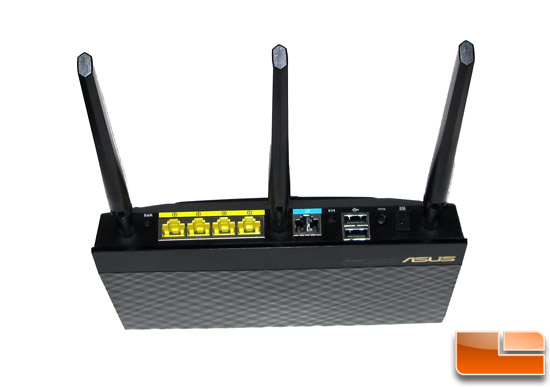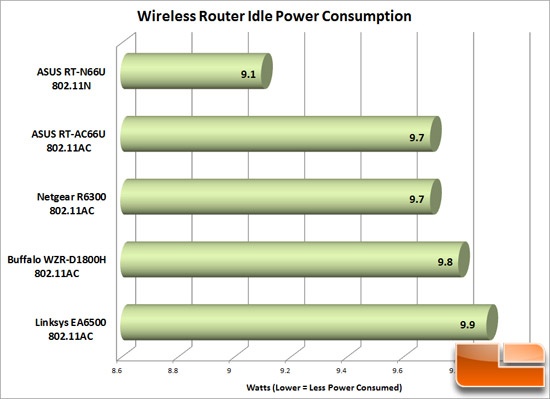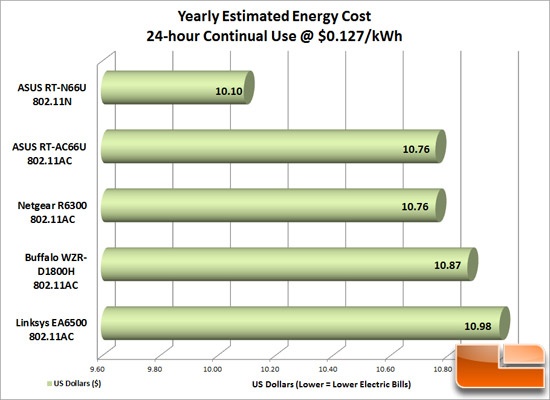ASUS RT-AC66U 802.11ac Wireless-AC1750 Router Review
ASUS RT-AC66U: Power Consumption

Power consumption by your home’s electronic devices continues to be a very important issue so we have made an attempt to present some simple power consumption tests on the various routers that we had. To measure idle usage, we reset each wireless router to the default settings and plugged them with no devices connected to them. We then measured the power draw from each router at the wall with our P3 International P4400 Kill-A-Watt electric usage monitor.

Benchmark Results: As expected, the ASUS RT-AC66U consumes the same amount of energy as that of all the wireless-AC routers. The idle-power consumption numbers are almost 2-time greater than wireless-N devices.
Since most people will have their routers turned on for 24-hour a day operation, we think that examining power usage is an important benchmark. Total cost of ownership (TCO) is an important financial estimate that helps consumer’s direct and indirect costs of a product. In our TCO calculation we will be figuring up how much it costs to have a wireless router running per year in an idle state with the unit being installed 24-hours a day. We will be using 12.7 cents per kilowatt-hour (kWh) based on the bureau of labor statistics report from April 2012 showing that amount as the national average.

Benchmark Results: There is a price to pay for the fast Wi-Fi on the market and you will definitely see a difference in your electric bill when you get rid of you old wireless-N device and replace it with a new 802.11ac device.

Comments are closed.